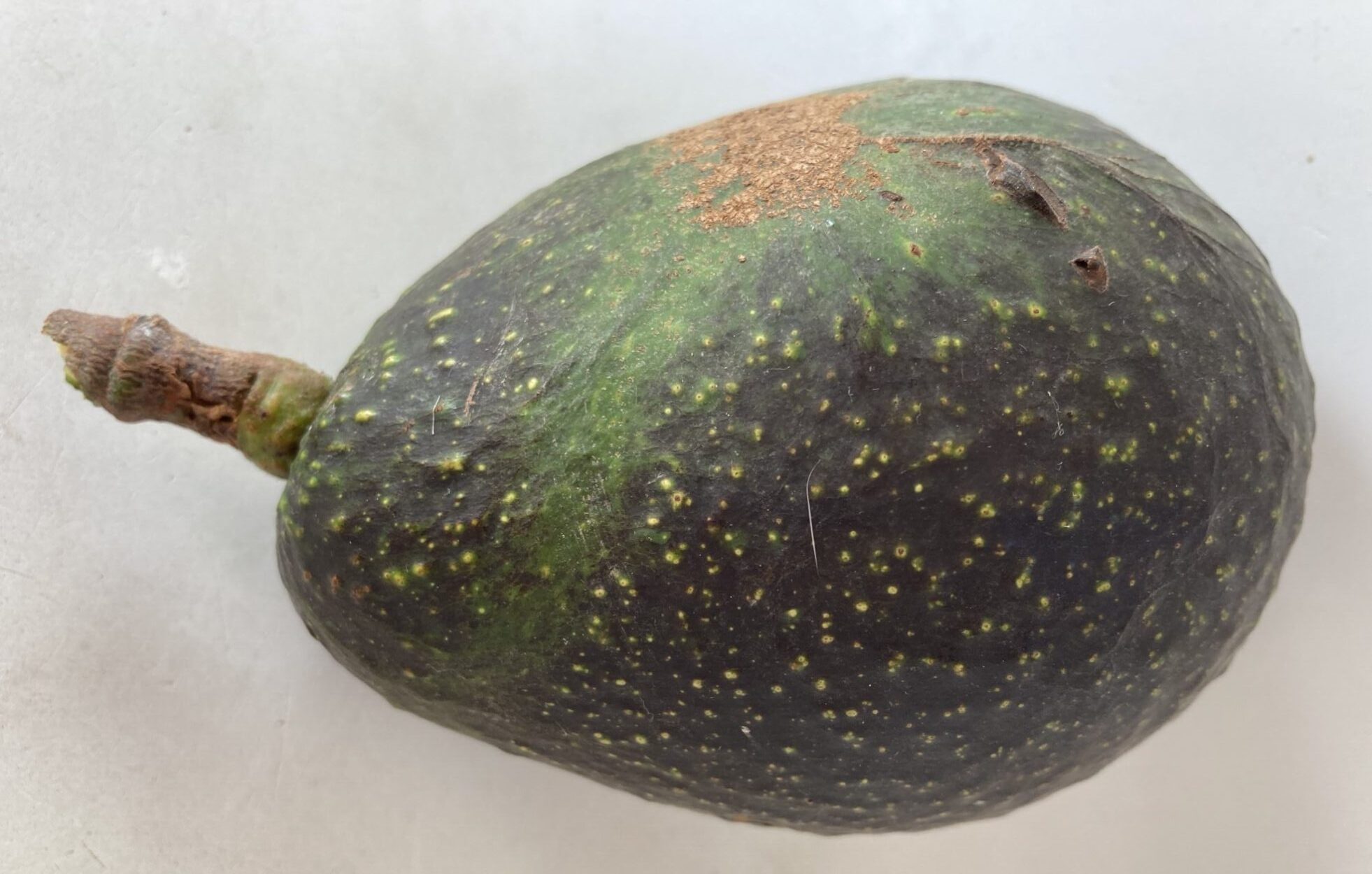Mendez No. 1 (Phoenix) Avocado
Everyone who has space in their yard for an avocado tree should own a Phoenix. This vigorous grower with a round dense canopy is almost always loaded with fruit. The Phoenix avocados are top-notch, Hass-like, with the familiar easy-to-peel leathery skin, sliceable oily flesh, and mild pleasing flavor. What makes this tree special though is that it blooms at least twice per year (rumor has it that it blooms more than that further south), so that one has the potential of having a whole new crop of delicious rich fruit setting every 6 months. Here in Central California where a late spring freeze is not that unusual, we know that another round of flowering is just 6 months away if the early bloom has been lost to the frost. And if the pollinators are too busy in the spring with competition from all the other flowers, the second bloom during the fall occurs at a time when there is nothing much else to attract a bee’s attention. To continue the comparison, the notoriously finicky Hass gives us a full load of fruit every other year at best, whereas the Phoenix offers much more potential for continuous, often year-round avocados.
Originally found in an Hass orchard in Michoacan, Mexico in the 1980, the tree stood out because of its unusual flowering habits and tendency to ripen fruit during the off season. It was patented in 1997 as “Mendez No. 1” and is also sold under its trademarked name “Carmen Hass”.
Phoenix trees are medium sized in height, produce an avocado that is the same as Hass in size (6-14 ounces), shape (longer than they are round), and color (black when ripe), and have an “A” type flower.
We will begin selling trees for the season in spring 2024; to reserve a tree contact us through the order form and we will add you to our waiting list.
Trees are approximately 3 feet tall and sell for $45 each cash or check or Venmo, or $47 via credit card or PayPal. All trees are sold in a poly grow sleeve that is roughly equivalent to a #2 pot.

